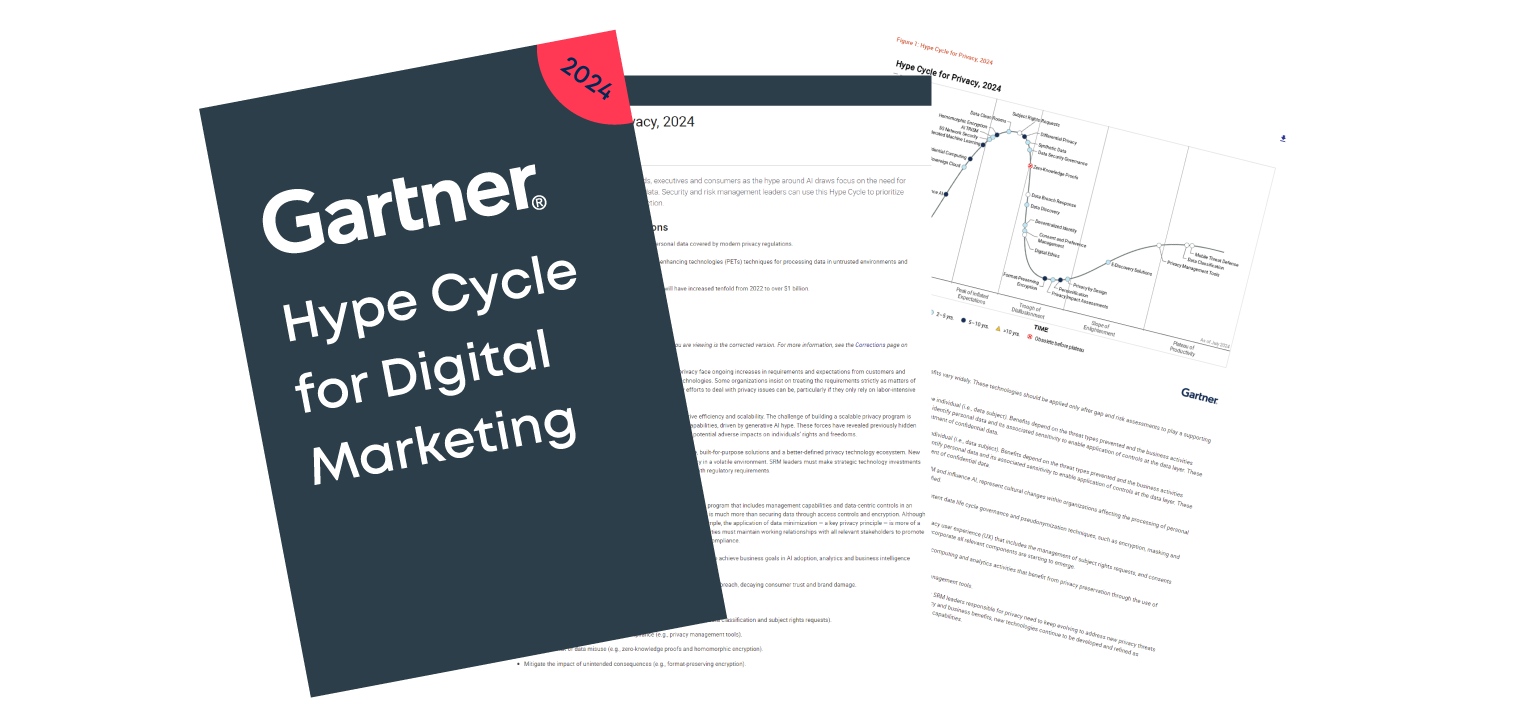Emotion AI for Marketing: Personalizing engagement through emotional insight
Posted: September 16, 2024
Emotion AI, also known as affective computing, is a branch of artificial intelligence that focuses on recognizing, interpreting, and responding to human emotions. This technology leverages data from facial expressions, voice intonations, body language, and textual cues to understand emotional states. In marketing, Emotion AI is becoming increasingly vital as it allows brands to connect with customers on a more personal and emotional level, enhancing engagement and loyalty.
Personalization in marketing is no longer a luxury but a necessity. In a world where consumers are bombarded with generic advertisements, personalized marketing stands out by addressing individual preferences and needs. Emotion AI takes personalization a step further by incorporating emotional insights, allowing brands to create more meaningful and resonant interactions. This emotional connection can significantly impact customer satisfaction, loyalty, and ultimately, conversion rates.
This blog aims to explore the transformative potential of Emotion AI in marketing. By delving into how Emotion AI works, its benefits, ethical considerations, and future trends, we will uncover how this technology can revolutionize brand interactions and drive more personalized and effective marketing campaigns.
Understanding Emotion AI
Emotion AI encompasses technologies that analyze and interpret human emotions. Its key components include emotion detection, sentiment analysis, and emotional response generation. Emotion detection involves identifying specific emotions from facial expressions, voice tones, and text. Sentiment analysis assesses the overall emotional tone of a piece of text, while emotional response generation involves creating responses that align with the detected emotions.
Emotion AI employs advanced algorithms and machine learning techniques to process and analyze data. For example, facial expression analysis uses computer vision to detect micro-expressions and facial movements. Voice analysis involves examining pitch, tone, and speech patterns to identify emotional states and text analysis uses natural language processing (NLP) to interpret the sentiment behind written words. By combining these methods, Emotion AI can provide a broad understanding of a person’s emotional state.
Emotion AI is revolutionizing various industries with its innovative applications. In the retail sector, companies are using advanced facial recognition technology to assess customer satisfaction levels, allowing them to personalize in-store experiences and enhance customer engagement, and the customer experiences is further enhanced with responsive customer service, where call centers are employing sophisticated voice analysis tools to detect signs of frustration or distress in callers’ voices, enabling agents to adjust their responses and provide more empathetic support. in healthcare, Emotion AI is being utilized to monitor patients’ emotional states, offering valuable insights that help healthcare providers deliver more effective mental health support. These diverse applications underscore the remarkable versatility and effectiveness of Emotion AI in significantly improving customer and patient experiences across different fields.
Benefits of Emotion AI in Marketing
Emotion AI enables brands to forge deeper connections with their customers by understanding and responding to their emotional states. When brands can accurately gauge emotions such as happiness, frustration, or excitement, they can tailor their interactions to make customers feel valued and understood. This emotional resonance builds a sense of loyalty and encourages customers to engage more frequently with the brand. For instance, a customer who feels genuinely understood is more likely to return and recommend the brand to others.
Emotional insights allow brands to significantly improve customer experiences by addressing their emotional needs in real-time. For example, if a customer shows signs of frustration while navigating an online store, the brand can immediately offer assistance through a live chat or provide a special discount to alleviate the negative emotion. This proactive approach not only resolves the immediate issue but also demonstrates the brand’s commitment to customer satisfaction, leading to higher levels of trust and long-term loyalty.
Understanding customer emotions can have a profound impact on conversion rates. By tailoring marketing messages to resonate on an emotional level, brands can create more compelling and persuasive campaigns. For instance, a cosmetics brand that uses Emotion AI to analyze customer reactions to new products can refine its marketing strategies to highlight the most emotionally appealing features. This targeted approach can lead to increased interest and higher sales, as customers are more likely to purchase products that resonate with their emotional needs and desires.
This shift towards emotionally intelligent marketing can differentiate a brand in a crowded marketplace, making it more memorable and appealing to customers. By continuously analyzing and responding to emotional data, brands can stay ahead of trends and adapt their strategies to meet evolving customer expectations.
How Emotion AI personalizes brand interactions
Emotion AI enables marketers to customize their messages by analyzing emotional data. For instance, if a customer frequently expresses joy when viewing travel content, a travel company can send personalized vacation recommendations that align with the customer’s preferences. This level of customization creates a deeper emotional connection, making the customer feel understood and valued. By addressing the specific emotional triggers of each customer, brands can enhance the overall customer experience and build stronger relationships.
An example of personalized interactions
One of the most powerful features of Emotion AI is its ability to adapt marketing strategies in real-time. If a customer shows signs of frustration while navigating a website, the system can offer immediate assistance, such as a live chat option or a special discount. This real-time adaptation helps to address customer needs promptly and effectively, improving their experience and increasing the likelihood of conversion. For example, an e-commerce site might detect a customer’s frustration during the checkout process and offer a simplified checkout option or a discount code to ease the process.
Ethical considerations
Protecting personal emotional data is crucial. Brands must implement security measures to safeguard this sensitive information. This includes encrypting data, limiting access to authorized personnel, and regularly auditing security practices to prevent breaches.
Obtaining clear consent from customers is essential. Brands should be transparent about how emotional data is collected, used, and stored. Providing customers with detailed information about data practices and allowing them to opt-out if they choose helps build trust and ensures ethical use of Emotion AI.
Emotion AI systems can be susceptible to biases, which can lead to unfair or discriminatory outcomes. It’s important to regularly test and refine algorithms to minimize biases and ensure fairness. This includes using diverse training data and involving ethicists in the development process to identify and address potential biases.
While personalization is a powerful tool, it must be balanced with ethical considerations. Brands should avoid intrusive or manipulative practices that exploit emotional data. Instead, they should focus on creating positive and respectful interactions that enhance the customer experience without compromising ethical standards.
Challenges and limitations of Emotion AI
Implementing Emotion AI can be a complex and costly endeavor. It requires significant investment in advanced technology, infrastructure, and specialized expertise. Brands may face challenges in integrating Emotion AI with their existing systems, ensuring seamless operation, and maintaining the necessary technical support. This complexity can be a barrier for smaller companies or those with limited resources.
Emotion detection is not always accurate. Factors such as cultural differences, individual variations, and contextual nuances can significantly affect the accuracy of emotion recognition. For example, a smile might indicate happiness in one culture but could be a sign of discomfort in another. Misinterpreting emotions can lead to ineffective or even harmful marketing strategies, making it crucial to continuously improve the accuracy of Emotion AI systems through ongoing research and development.
Skepticism about privacy and AI can impact the adoption of Emotion AI. Customers may be wary of how their emotional data is used and whether it is adequately protected. Concerns about data breaches, misuse of information, and lack of transparency can deter customers from engaging with brands that use Emotion AI. Building trust through transparency, ethical practices, and clear communication is essential to overcoming these concerns. Brands must ensure they have stringent data protection measures in place and clearly communicate how emotional data is collected, used, and safeguarded.
Brands who address these challenges – complexity and cost, accuracy issues, and privacy concerns – brands can better leverage the potential of Emotion AI while maintaining customer trust and delivering effective marketing.
Privacy implications of Emotion AI in Marketing
Emotion AI relies on collecting sensitive data such as facial expressions, voice tones, and text inputs to analyze emotions. This raises significant privacy concerns, as customers may not always be aware of the extent of data being collected. Obtaining clear and explicit consent from customers is crucial. Brands must be transparent about what data is being collected, how it will be used, and for what purposes. Providing customers with the option to opt-out is also essential to maintain trust. Without clear consent, customers may feel their privacy is being invaded, leading to a loss of trust and potential backlash against the brand.
The sensitive nature of emotional data necessitates security measures to protect it from breaches and unauthorized access. Brands must implement strong encryption, access controls, and regular security audits to safeguard this data. Any lapse in security can lead to severe consequences, including loss of customer trust and legal repercussions. For instance, a data breach involving emotional data could expose individuals to identity theft or emotional manipulation, causing significant harm. Therefore, it is imperative for brands to prioritize data security and continuously update their security protocols to address emerging threats.
How emotional data is used and stored is another critical aspect. Brands need to ensure that the data is used strictly for the purposes for which consent was obtained. Storing emotional data for extended periods can increase the risk of misuse or breaches. Therefore, it is advisable to limit data retention to the minimum necessary duration and ensure secure deletion of data when it is no longer needed. This practice not only reduces the risk of data breaches but also aligns with data minimization principles, which are a key component of many data protection regulations.
Emotion AI systems can be susceptible to biases, which can lead to unfair or discriminatory outcomes. For example, certain facial expressions or voice tones might be interpreted differently based on cultural or individual differences. Brands must regularly test and refine their algorithms to minimize biases and ensure fairness. Using diverse training data and involving ethicists in the development process can help address these issues. By doing so, brands can ensure that their Emotion AI systems are more accurate and equitable, thereby avoiding potential reputational damage and legal challenges.
Transparency in how emotional data is collected, used, and protected is essential for building and maintaining customer trust. Brands should provide clear and accessible information about their data practices and be accountable for any misuse or breaches. Establishing a clear line of communication with customers regarding their data rights and how they can exercise them is also important. This includes informing customers about their right to access, correct, or delete their data, and providing easy-to-use mechanisms for them to do so. By delivering on transparency and accountability, brands can build stronger, more trusting relationships with their customers.
Future of Emotion AI in Marketing
The future of Emotion AI in marketing is bright, with several advancements on the horizon. Improved emotion detection algorithms are making it possible to recognize a wider range of emotions with greater accuracy. Integration with other AI systems, such as natural language processing (NLP) and machine learning, is enhancing the ability to analyze and respond to emotional data in real-time. Additionally, the development of more sophisticated emotional response generation techniques is enabling brands to create more nuanced and personalized interactions with their customers.
Emotion AI is poised to revolutionize personalized marketing by providing deeper insights into customer behavior and preferences. This technology allows brands to create highly targeted and effective marketing campaigns that resonate on an emotional level. By understanding the emotional drivers behind customer decisions, marketers can craft messages that are more compelling and persuasive, leading to higher engagement and conversion rates. Emotion AI is likely to become a standard tool in the marketer’s toolkit, driving innovation and enhancing customer experiences.
To stay competitive in this evolving landscape, businesses must stay informed about the latest advancements in Emotion AI and be ready to adapt their strategies accordingly. This includes investing in cutting-edge technology, training staff to effectively use Emotion AI tools, and developing ethical guidelines to ensure responsible use of emotional data. By preparing for these changes, brands can leverage Emotion AI to meet evolving customer expectations and maintain a competitive edge.
Final thoughts
Emotion AI offers powerful tools for personalizing marketing through emotional insights. By understanding and responding to customer emotions, brands can significantly enhance engagement, satisfaction, and loyalty. This technology allows for deeper connections with customers, making them feel valued and understood.
Balancing innovation with ethical responsibility is crucial. Brands must ensure that their use of Emotion AI respects customer privacy, obtains clear consent, and addresses potential biases. Ethical considerations should be at the forefront to maintain trust and integrity in customer relationships.
Marketers should explore the potential of Emotion AI while being mindful of its limitations and ethical implications. By leveraging this technology responsibly, brands can create more meaningful and effective marketing campaigns. This approach not only drives business success but also delivers a positive and respectful customer experience.
If you’d like to learn more about Emotion AI, the Gartner Hype Cycle for Digital Marketing explores this theme (and many more) and provides valuable information on the future of digital marketing and the role of trust and AI in driving business success.


